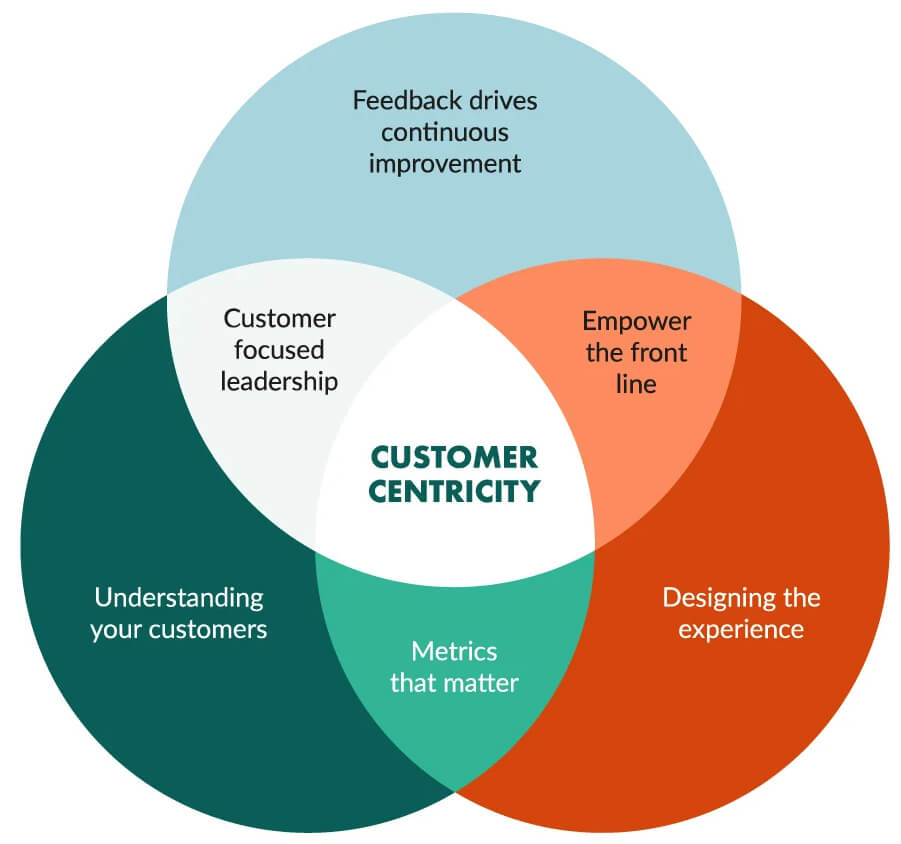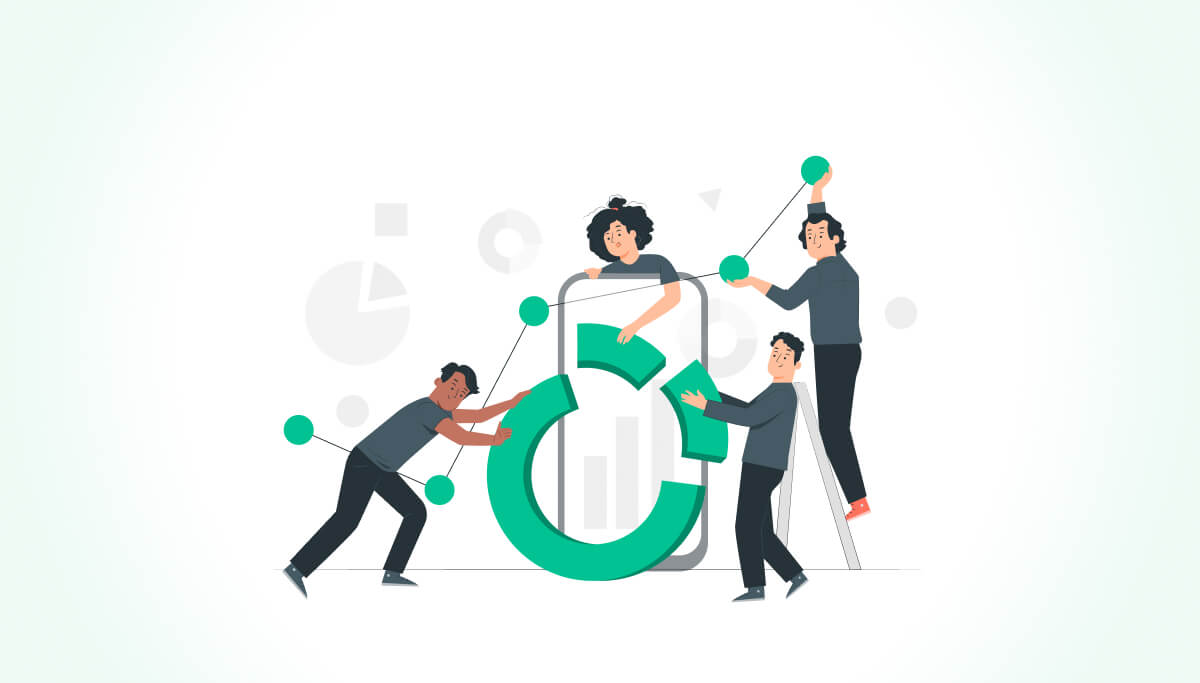No SaaS business can survive without concentrating intensely on its customers – essentially, this means that every decision taken considers the needs and wants of the customer, and the customer is always at the heart of everything you do. It’s not always easy to focus on customers when there is the bottom line to look after, but Customer Centric Culture is the best long-term strategy for success. When you make customers happy, profits will naturally follow. Customer-centricity is not just the job of customer-facing teams, since everyone in the business has the possibility of making an impact.
What company doesn’t want to say they put customers first? In product design, to customer support, to overall vision for the business, customers need to know they are your primary priority.
Definition of a Customer-Centric Culture

A company with a customer-centric culture is one that is aware of the needs, wants and expectations of its customer base. The company uses its customer insight to build positive customer experiences that keep customers coming back again and again, renewing their subscription and recommending your products to others.
A customer-centric culture doesn’t prioritize profits – it cares about the customer. For SaaS businesses, repeat customers are the lifeblood of its growth model and help keep your business afloat. Prioritizing customers is a win-win because customers are happy and choose to stay with your business instead of checking out competitors.
According to Gartner:
“Customer centricity is the ability of people in an organization to understand customers’ situations, perceptions, and expectations. Customer centricity demands that the customer is the focal point of all decisions related to delivering products, services and experiences to create customer satisfaction, loyalty and advocacy.”
Importance of Customer-Centricity in SaaS Organizations
The benefits of customer-centricity are numerous, especially within the SaaS industry.
Customer-centricity is especially important within a SaaS organization, which relies on building long-term customer relationships to sustain the business. If customers have a high churn rate, your business cannot survive purely on an influx of new customers alone.
When customers feel like you value them and meet their needs, they are more likely to renew. Nurturing customers and paying attention to their desires means you can produce products that are likely to be adopted.
Customer-centricity reduces churn because you are executing a strategy that retains customers. If you make short-sighted decisions based on your bottom line that neglects customers, you are likely to experience a loss of customers in the long-term and the failure of your SaaS business
8 Best Practices for Building a Customer-Centric Company
1. Grow your customer service department
Many companies view their customer service department as a cost-center, but if you invest in customer service then you can prevent customer churn. Customer service is revealed to be the driving factor in making another purchase by 81% of customers, so it’s worth training highly skilled, knowledgeable and friendly agents.
When customers run into problems, they need to know your business will jump into action to help them. Complex software products often require complex support, along with self-service resources to empower customers to be successful.
2. Implement all-hands customer support
Many companies – such as Help Scout – require all hands on deck when it comes to providing support for their customers. It’s not so much that they need to expand the customer support department as they want every member of the organization to understand what it’s like to help customers directly. This results in more customer-centric thinking and decision-making.
Even if your employees can’t help with all the tickets, assisting customers is still a valuable experience for any member of your company. Ensuring all team members can get closer to the customer results in better products and processes.
3. Seek out customer feedback without being asked
The one way to guarantee you are giving customers what they want is to actively ask them. Aside from customers feeling appreciated when you solicit their feedback, you can ensure your product roadmap is developing in the right direction to give customers satisfaction and earn their loyalty. 77% of customers view brands more positively if they consistently seek out and apply their feedback.
Customers will change over time and that’s why it’s important to consistently collect their feedback. Customers may also not know exactly what they want, so it’s important to balance their opinions with your own vision of where to take your customer-centric company.
4. Pay attention to detail
Customers notice the little things, and when you truly pay attention to the details you have the possibility to elevate the customer experience. Details can be obvious things such as remembering a customer’s name, or recalling purchase history to suggest future products or upgrades.
If a customer has just upgraded to your premium plan, they don’t want to see adverts for it on social media. These marketing elements can be hard to control, but they are all part of creating a great customer experience.
5. Regard your company culture as valuable
How you treat your employees has a direct impact on whether your company can call itself customer-centric. Employees are the ones looking after and meeting the needs of your customers, often on the frontlines of the business but also designing products that thrill them.
Your company culture influences whether customers can develop mutually satisfying relationships with your business. This means you need to protect and preserve your company culture as the source of business success, since your culture is what survives even as the business evolves.
6. Proactive customer support & customer support tools
You don’t need to wait for customers to get in touch before you reach out and offer support. If you know there is a bug in your software or a system outage, make sure you keep customers in the loop so they know that you value their success.
Pre-empting customer tickets is one of the best ways for your SaaS business to show customers you care. It means you understand the promises that your business needs to keep and shows respect when issues occur. Providing excellent support requires the right support tool such as help desks and knowledge bases.
7. Invest in customer success
Customer success software enable you to invest in customer success and empower more customers to adopt your products. Your CSMs thrive when they have the right tools to help customers, enabling them to keep track of metrics like health score which let them know when they should intervene. Customer success means that customers will be more successful with your products, and therefore be retained for a longer period and have a lower churn rate. If your company is customer-centric, then you will focus on customer success because it’s all about fulfilling your promise to your customers.
8. Prioritize Relationship Building
When operating a SaaS business, you need to think about the long-term relationships with your customers instead of short-term gains. For example, a customer may be on your freemium plan but they may have the potential to grow into one of your most valuable customers. Treating every customer like they matter is key. Every interaction with a customer of your SaaS business is part of a larger relationship, and nurturing customers with a growth mindset instead of trying squeeze every penny from them is better.
Measuring the Success of Customer-Centricity
1. Customer Loyalty Programs
Customer loyalty programs show you the long-term behavior patterns of your customers and indicates whether your strategies of engagement have been successful. If your customer loyalty program is thriving, then you know that your business is customer-centric because you’re giving customers exactly what they want.
2. Customer Support Duration
If you’re spending less time on customer support then this could be a sign that your product and service is working well, because customers are encountering fewer problems. If agents are spending less time on calls, this could mean they are skilful at resolving customers’ issues without engaging in lengthy processes or handoffs.
3. NPS Forms
Actively seeking out your customer’s feedback about whether they would recommend your company tells you whether your customer-centric strategy has been successful. Net Promoter Score indicates whether customers would share your product with family, friends and colleagues, meaning that they like it enough to stand behind it.
More Customer-Centric Company Examples
There are quite a few customer-centric SaaS companies out there you might want to learn from. Here are some of our favorites.
To gain deeper insights into Churn360, we recommend setting up a demo with one of our experts for a detailed walkthrough
Book a demo
Buffer
Buffer is the champion of customer-centric culture. Even when Buffer got hacked, customers were particularly impressed with the company’s fast, empathetic and transparent response. It’s only by prioritizing the customer that Buffer was able to respond in such a positive way. But it’s not only during a crisis that Buffer excels – their Happiness team is responsible for looking after customers and providing customer support, and everyone in the company contributes to all-hands support.
Spotify
Spotify is another customer-centric SaaS company that leverages the power of data to improve recommendations and playlists, fostering a music community and making them the top music streaming app. When customers get in touch with problems, Spotify often responds with personalized playlists. Being able to be personal in their interactions with customers makes their support team even more customer-centric.
Netflix
One of the reasons that Netflix has been so successful, despite stiff competition, is their customer-centric strategy. Using customer data and viewing habits to create new TV shows and movies, Netflix develops products directly for the customer. By analyzing what customers wanted, Netflix managed to pivot from sending DVDs by mail to a content streaming service, with many loyal fans.
Conclusion
SaaS organizations that prioritize the customer experience and put customers front and center are in the best position for success. It doesn’t matter how great your product is – if customers don’t love your company then you will succumb to churn. Focusing on what matters most to customers and building a thriving customer-centric culture is key. Customers are not just buying a software product – they are looking for a problem to be solved and it’s up to your company to provide great service. When it comes time to renew their subscription, you want no doubt in the customer’s mind that you are the worthy choice.


